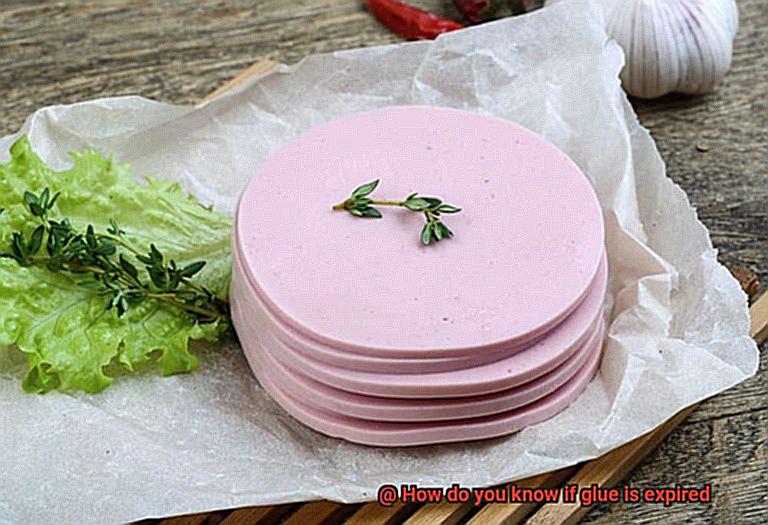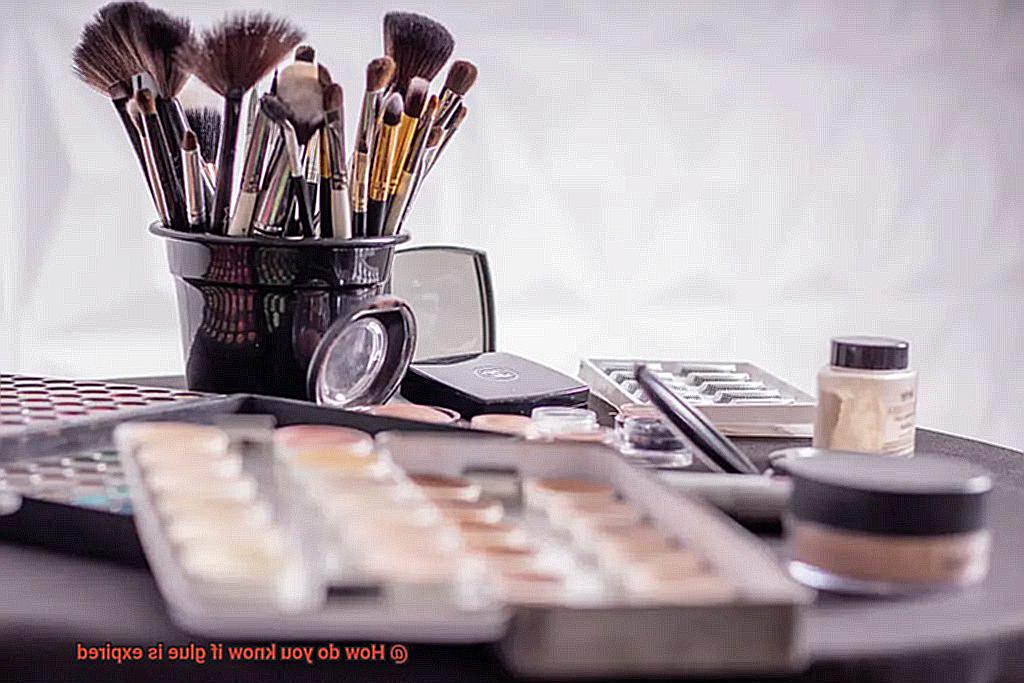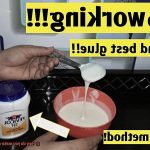Picture this: you’re knee-deep in a DIY project or crafting masterpiece, and all that stands between you and glory is a trusty bottle of glue. But wait. Is it still good? Don’t let expired glue ruin your next endeavor. In this blog post, we’ll uncover the secrets to identifying if your glue has gone past its prime.
How do you know if glue is expired?
Contents
Age Matters:
Glue might seem timeless, but even it has an expiration date. Check for a manufacturing or expiration date on the bottle. If it’s way past due, chances are the adhesive properties have gone kaput. No date? No problem. There are other signs to look out for.
Physical Signs of Deterioration:
Give your glue a good once-over. Has it thickened or turned clumpy? Maybe it’s lost that smooth texture and taken on a yellowish tint. Look closely for any separation – liquid and solids should not be going their separate ways. These physical changes spell trouble for your adhesive’s effectiveness.

Performance Woes:
Looks can be deceiving, so put your glue to the test. Does it bond as strongly as before? Is it taking forever to dry? A lackluster performance could mean expiration is looming large. And don’t forget about the smell – if it’s different from what you remember, that’s another red flag.
Don’t let expired glue stick around like an unwanted guest at your creative party. By considering factors like age, physical changes, and performance variations, you can easily determine if it’s time to bid farewell to your old adhesive and find a fresh replacement. Keep those projects sticky in all the right ways.
What Is Glue and How Does It Expire?
Glue is a versatile adhesive substance that is used to bond two surfaces together. It is commonly utilized in various applications such as crafts, woodworking, and repairs. There are different types of glue available in the market, including liquid glue, glue sticks, and adhesive tapes. Each type of glue has its own specific composition and expiration date.
Glue typically consists of a base material, such as resin or polymer, along with other additives like solvents and fillers. These components work together to create a strong and durable bond. When applied to a surface, the glue forms a temporary liquid layer that adheres to the materials being bonded. As it dries, the liquid layer solidifies and creates a secure connection between the surfaces.
Like many other products, glue has a shelf life or expiration date. Over time, the chemical composition of the glue can change, making it less effective in creating a strong bond. The expiration date of glue can vary depending on the type and brand. Some glues may have a shelf life of several months, while others can last for years if stored properly.
One common indicator that glue has expired is a change in its consistency. Expired glue may become thicker or clumpier, making it difficult to apply evenly. Another sign of expired glue is a change in its odor. If the glue starts to smell different or unpleasant, it could be an indication that it is no longer usable.
In some cases, expired glue may also lose its adhesion properties. The bond created by the glue may become weaker or fail altogether. It is important to note that using expired glue may not only result in a weak bond but also affect the overall quality of the project or repair. Therefore, it is recommended to check the expiration date of the glue before using it.
To maximize the shelf life of glue, it is essential to store it properly. Glue should be kept in a cool and dry place, away from direct sunlight and extreme temperatures. Additionally, ensuring that the container is tightly sealed after each use can help prevent air exposure and extend the lifespan of the glue.
Signs of Expired Glue
Glue, that magical adhesive substance that binds things together like a superhero, comes in different forms and has an expiration date just like your favorite snacks. When glue starts to get thick and clumpy or smells funky, it’s time to toss it in the glue graveyard because its bonding powers have faded away.
One of the signs that your glue has expired is a change in color. If you notice that your glue has become yellowish or brownish, it’s a clear indication that the glue has deteriorated over time and is no longer usable. Another sign to watch out for is a change in consistency. Expired glue may become thicker or clumpy, making it difficult to spread or apply smoothly. On the other hand, some glues may become thinner and runny, losing their adhesive properties.
A strong and unpleasant odor is also an indication of expired glue. Over time, the chemicals in the glue can break down, resulting in a foul smell. If you notice a strange or pungent odor coming from your glue, it’s best to discard it and get a fresh one.
Expired glue may lose its adhesive power. When glue expires, its ability to bond materials together weakens. If you find that the glued items are easily coming apart or not sticking properly, it may be due to the expired glue.
In some cases, expired glue may also have mold growth. This can happen when moisture enters the glue bottle and promotes the growth of mold spores. If you see any signs of mold or mildew in your glue, it is definitely expired and should not be used.
To avoid using expired glue, pay attention to the expiration date on the glue packaging. Most glues have a shelf life of about one to two years from the manufacturing date. If you notice that the glue has exceeded its expiration date, it’s better to get a fresh bottle rather than risking using expired adhesive.
Lastly, if you’re unsure whether your glue is expired or not, it’s always a good idea to perform a small test before using it on important projects. Apply a small amount of glue on a scrap piece of material and observe how well it adheres. If it doesn’t bond properly or shows signs of any of the aforementioned issues, it’s a clear indication that the glue is expired.
Checking the Color of Glue
As you inspect a bottle or tube of glue, it’s natural to wonder if its color can reveal its expiration status. Let’s delve into this question and explore the various factors that come into play.
Fresh glue, when first cracked open, showcases a clear or slightly yellowish hue. This is the vibrant color you expect to see when you embark on a new adhesive project.
However, as glue ages, its color may undergo a transformation. It can darken, taking on a brownish tint. This change in color serves as an indication that the glue’s effectiveness may be compromised. It suggests that the chemical composition of the adhesive has shifted over time, rendering it less reliable.
Nevertheless, it’s important to recognize that not all glues will exhibit such color changes when they expire. For instance, white school glue or wood glue might retain their original color even after they have expired. In these cases, relying solely on color may prove insufficient in determining if the glue is past its prime.
To complicate matters further, additives or pigments present in the glue can affect its color, making it challenging to gauge expiration solely based on appearance. Evaluating texture, smell, and performance becomes crucial when additives cloud the clarity of color assessment.
Specialty glues like epoxy or super glue often consist of two separate components that must be mixed before use. In such instances, evaluating each component’s individual color may not accurately indicate expiration. Instead, manufacturers’ guidelines regarding shelf life and storage conditions should be followed to ensure optimal performance.
Testing the Adhesive Strength of Glue
Testing the adhesive strength of glue is a crucial step in determining its effectiveness and expiration. Whether you’re embarking on a DIY project, repairing broken items, or utilizing glue for general purposes, understanding how well it adheres and holds different materials together is paramount.
One method to test adhesive strength is the peel test. This entails applying a small amount of glue onto a surface and allowing it to dry completely. Once dried, a piece of material, such as paper or fabric, can be affixed to the glued surface. To perform the peel test, firmly grasp one end of the adhered material and gradually pull the other end away. Take note of how easily or difficult it is for the glued material to detach from the surface. A strong and effective adhesive will demonstrate high adhesive strength, making it arduous to remove the adhered material without causing damage.
It’s important to note that different types of glues possess varying adhesive strengths. For instance, wood glue is specifically engineered for robust bonding on porous surfaces like wood, while super glue is renowned for its rapid and potent bonding capabilities on various materials.
Another approach to test adhesive strength is the shear test. Apply a small amount of glue between two materials, such as metal or plastic, and firmly press them together. Allow the glue to dry completely and then subject the bonded surfaces to force in a direction parallel to them. Evaluate how well the glued materials endure this force without separating. A strong and non-expired glue will exhibit high resistance to shearing forces, indicating excellent adhesive strength.
It’s worth mentioning that external factors like temperature, humidity, and surface preparation can influence the adhesive strength of glue. Therefore, it’s crucial to consider these factors when conducting adhesive strength tests to ensure accurate results.
Paying Attention to Expiration Dates
When it comes to using glue, paying attention to expiration dates is crucial. Just like how you wouldn’t want to rely on a weak bond in a relationship, you don’t want your glue to lose its adhesive properties and let you down. So, why is it so important to check those little dates on the packaging?
Firstly, the expiration date indicates the period during which the glue is guaranteed to work as intended. After this date, the glue may start to lose its effectiveness and performance. Imagine trying to stick two pieces of paper together with glue that has lost its adhesive power – it’s like trying to hold a relationship together when all the love has faded away.
Different types of glue may have different expiration dates. Some glues may have a shelf life of two years, while others may last only six months. It’s essential to check the specific expiration date for the type of glue you are using. Just like how every relationship is unique, every type of glue has its own timeline.
Using expired glue can result in weaker bonds and reduced adhesion. This can be particularly problematic if you are working on a project that requires strong and long-lasting adhesion. You wouldn’t want your DIY masterpiece to fall apart just like a relationship that couldn’t withstand the test of time.
In addition to the expiration date, storage conditions also play a significant role in maintaining the glue’s effectiveness. Just as external factors can impact a relationship, improper storage can accelerate the deterioration of glue, even before its expiration date. Glue should be stored in a cool and dry place away from direct sunlight and extreme temperatures. Exposure to heat, humidity, or sunlight can cause the glue to degrade faster, just like how external factors can put strain on a relationship.
If you’re unsure about the expiration date of your glue or suspect that it may have expired, there are a few signs to look out for. Firstly, check the consistency of the glue. If it has become thick, lumpy, or stringy, it may be past its prime. Just like how a relationship can become stagnant and lose its spark, expired glue loses its fluidity.
Another indicator of expired glue is a change in color or odor. If the glue has yellowed or developed an unpleasant smell, it’s likely no longer usable. Just like how someone’s true colors may come out in a failing relationship, expired glue shows its true colors as well.
Lastly, if you find that the glue is not adhering as well as it used to or is not drying properly within the specified time frame, it could be a sign that it has passed its expiration date. Just like how communication and effort can dwindle in a declining relationship, expired glue doesn’t put in the effort to bond materials together anymore.
To ensure optimal performance and avoid any potential issues, it’s best to replace expired glue with a fresh batch. It’s recommended to mark the purchase or opening date of the glue on the packaging to keep track of its shelf life. After all, just like how you wouldn’t want to invest your time and energy into a failing relationship, you shouldn’t waste your efforts on using expired glue.
Storing Glue Properly
Properly storing glue is crucial for maintaining its effectiveness and longevity. By following these steps, you can ensure that your glue remains usable for a longer period of time, saving you from the frustration of discovering expired glue when you need it the most.
- Check the manufacturer’s instructions: Different types of glue may have specific storage requirements, so it’s important to read and follow the instructions provided by the manufacturer. This will ensure that you store the glue in the optimal conditions for its longevity.
- Store in a cool and dry place: Most glues should be stored in a cool and dry place to maintain their quality. Excessive heat can cause glue to deteriorate, while high humidity can lead to mold growth or clumping. Choose a cabinet or shelf in a climate-controlled room as an ideal storage location.
- Keep it tightly sealed: It’s crucial to keep the glue tightly sealed when not in use. Exposure to air can cause the glue to dry out or thicken, making it unusable. Make sure the cap or lid is securely closed after each use to prevent air from entering the container.
- Check for expiration dates: Some types of glue, especially wood glue or epoxy, may have a shorter shelf life once opened. Check the label for any specific instructions on how long the glue remains usable after opening. If it has expired, discard it and purchase a fresh supply.
- Avoid extreme temperatures and sunlight: Glue should be kept away from extreme temperatures and direct sunlight. Heat can cause the glue to liquefy or evaporate, while cold temperatures can make it difficult to work with. Additionally, exposure to sunlight can degrade the adhesive properties of certain glues.
- Monitor for changes in consistency, color, or smell: If you notice any changes in the consistency, color, or smell of your glue, it may be a sign that it has expired. Expired glue may become clumpy, watery, discolored, or emit an unpleasant odor. In such cases, it is best to dispose of it and get a fresh supply.
- Keep an inventory and check expiration dates regularly: It’s a good practice to keep an inventory of your glue collection and regularly check for expiration dates. This will help you identify and discard any expired glue before attempting to use it for a project.
The Risks of Using Expired Glue
Using expired glue can have serious consequences for both the outcome of your project and your health. It is crucial to be aware of these risks and take the necessary precautions when using adhesive products. Let’s explore the potential dangers associated with using expired glue in more detail:
- Ineffectiveness: The primary risk of using expired glue is that it may lose its ability to bond materials properly. This can result in weak or unreliable adhesion, leading to project failure or damage to the materials being bonded. Imagine spending hours on a project only to have it fall apart because the glue was past its prime.
- Release of harmful fumes or toxins: Over time, the chemical composition of expired glue can change, causing the release of potentially harmful fumes or toxins. Inhaling these fumes can lead to respiratory problems or allergic reactions. To avoid these health hazards, it is crucial to use expired glue in well-ventilated areas or with proper respiratory protection.
- Thick and clumpy consistency: Expired glue may become thick and clumpy, making it difficult to apply evenly and smoothly. This can result in an uneven bond or a messy appearance. Additionally, the glue may clog the nozzle or dispenser, making it challenging to use effectively. Working with such a cumbersome product can be frustrating and lead to unsatisfactory results.
- Shortened shelf life: Another risk of using expired glue is that it may not last as long as fresh glue. This premature weakening or deterioration of the bond can be problematic for long-term projects or situations where a strong adhesive is required over an extended period. It’s important to have confidence in the durability of your adhesive throughout the lifespan of your project.
- Surface damage: The chemical changes in expired glue can react with certain materials, causing discoloration, corrosion, or other forms of damage. To avoid irreversible damage or staining, it is crucial to test an inconspicuous area before using expired glue on sensitive surfaces. Imagine ruining a valuable item or surface due to the corrosive properties of expired glue.
- Voided warranty or guarantees: Using expired glue may void any warranty or guarantees provided by the manufacturer. If you encounter any issues with your project due to using expired glue, you may not be eligible for compensation or support from the manufacturer. This lack of recourse can be frustrating and costly if your project suffers as a result.
Conclusion
Determining whether glue is expired is crucial for ensuring the effectiveness of your adhesive projects.
To assess the expiration status of glue, there are a few key indicators to look out for. Firstly, check the packaging for a manufacturing or expiration date.
If it has surpassed this date, it’s likely that the glue may have degraded in quality. Additionally, observe the consistency and color of the glue.
If it appears clumpy, discolored, or has separated into layers, these are signs of spoilage. Another factor to consider is the smell; if the glue emits a strong or unpleasant odor, it may indicate that it has gone bad.
If it doesn’t bond properly or remains tacky after drying, this could be an indication of expired glue.






